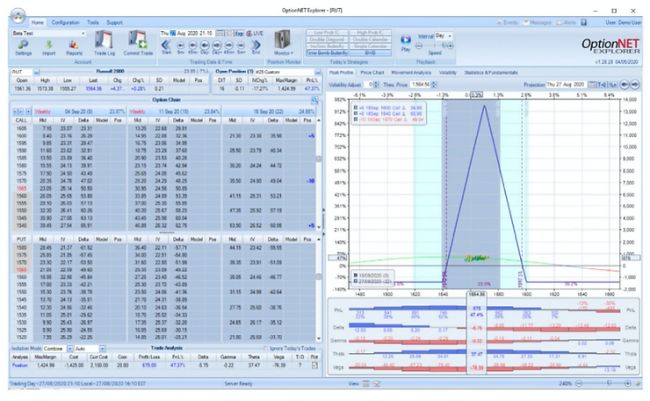A decision of the U.K. C.A. supports the position that copyright subsists in a graphic user interface ("GUI) produced by a computer program. THI Systems Ltd & Anor v Sheridan [2023] EWCA Civ 1354 (20 November 2023)
The Facts
The parties to the litigation were a software developer and an entrepreneur operating a business licensing the software. When a dispute occurred one issue to be resolved related to the subsistence of the copyright in the software as a literary work and in the graphical displays produced by the software as artistic works.
The graphical displays produced by the software consisted of "risk and price charts" produced by the software ("the R & P Charts"). An example of the R & P Charts is reproduced below:

The Trial
The Software developer's evidence was that software was like a video game. The software for a game performs thousands of calculations, which result in generating images we interpret as a form of video. Similarly, the software performs thousands of calculations, to determine theoretical asset prices at various intervals, projected profit and loss, adjustments, margins, volatility etc. These calculations resulted in generating an image or series of images as market data changes, which can be interpreted as a form of video. Like the game, the user does not enter the raw data (some of which is market data) or perform the calculations themselves. The images, including line types, colours, transparencies, layouts, font types etc., were all designed by the developer who used the components like a painter would use a paint and brush.
The Judge agreed with the plaintiff that the R & P Charts were a graphic user interface which enabled communication between a computer program and a user. They were original and protected as artistic works.
The Appeal
The Court referred to the evidence given by the software developer. His statement that "the look and feel of it is my brainchild" was not challenged. Nor were his statements that "[e]verything is original" and "everything on there is my design" because, although he had sourced components from a library, he had put them "into various locations". The cross-examiner used the analogy of building something from Lego bricks, and the analogy was a good one. The court must take account "of the specific arrangement or configuration of all the components which form part of the graphic user interface". The software developer did not enlarge upon the choices he had made, but he was not asked about this. Nor was it put to him that the visual appearance of the R & P Charts was dictated by technical considerations, rules or other constraints which left no room for creative freedom. The defendants adduced no evidence to contradict the software developer's evidence, such as similar graphical user interfaces produced by third parties. As the judge observed, the evidence was limited, but it was all one way.
The degree of visual creativity which went into the R & P Charts was low. But that did not mean there was no creativity at all. The consequence of the low degree of creativity was that the scope of protection conferred by copyright in the R & P Charts was correspondingly narrow, so only a close copy would infringe.
Since the Court agreed with the Trial Judge the appeal was dismissed
Comment
The decision of the UKCA Court of Appeal is not binding on a court in Canada. However, it seems likely that this approach will be highly persuasive in Canada. The bottom line is a GUI must satisfy the requirement for originality under the Copyright Act and can be protected as an artistic work.
The content of this article is intended to provide a general guide to the subject matter. Specialist advice should be sought about your specific circumstances.

